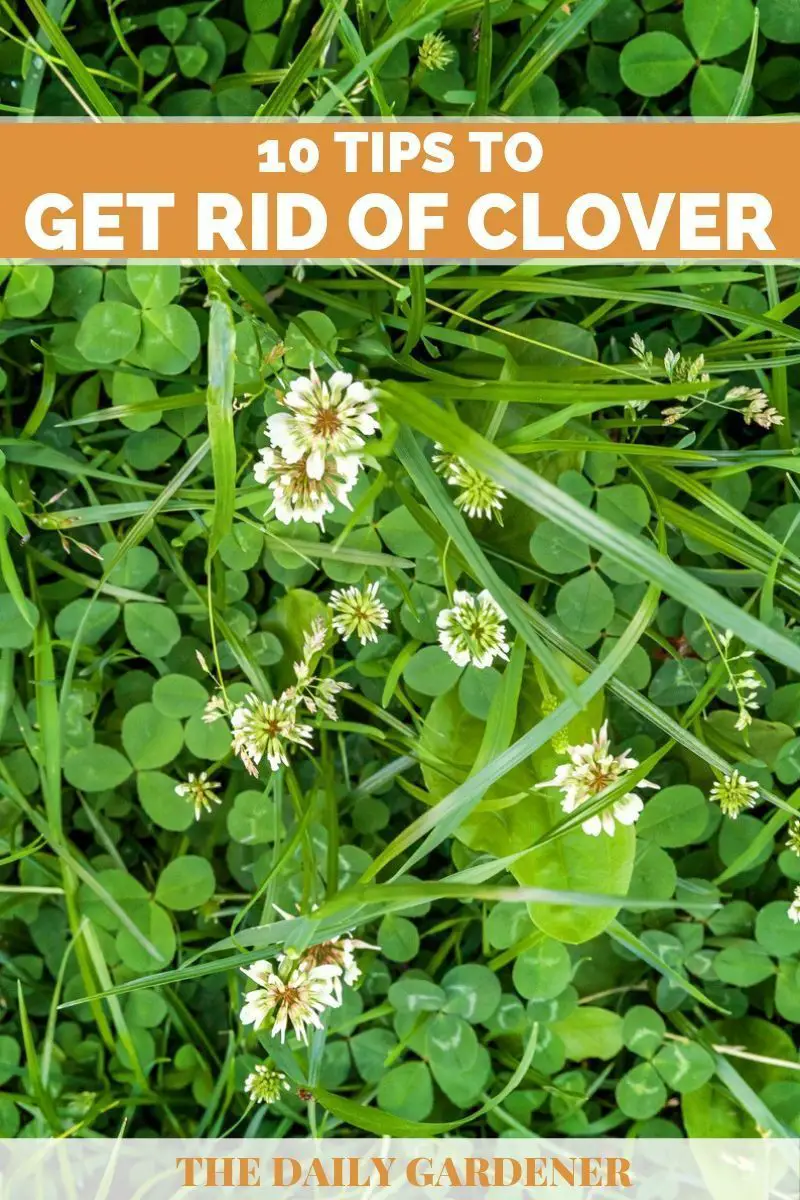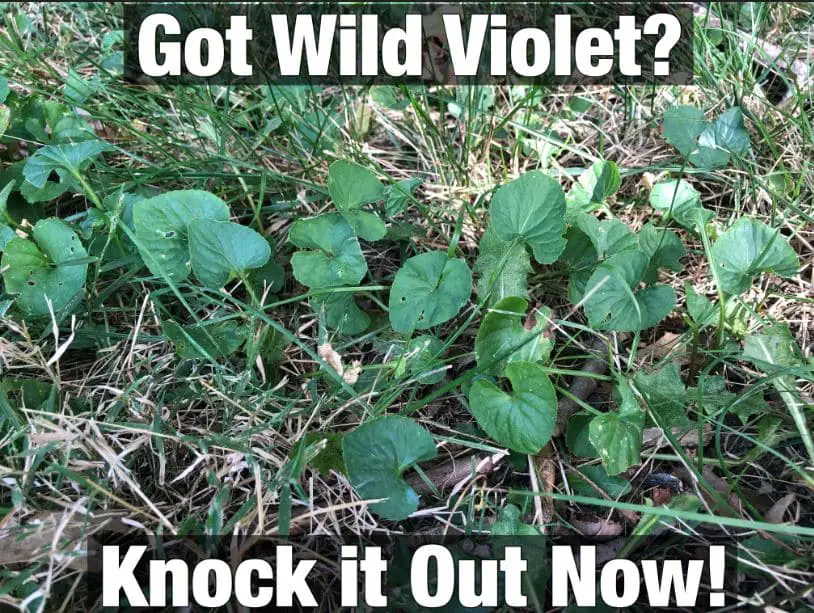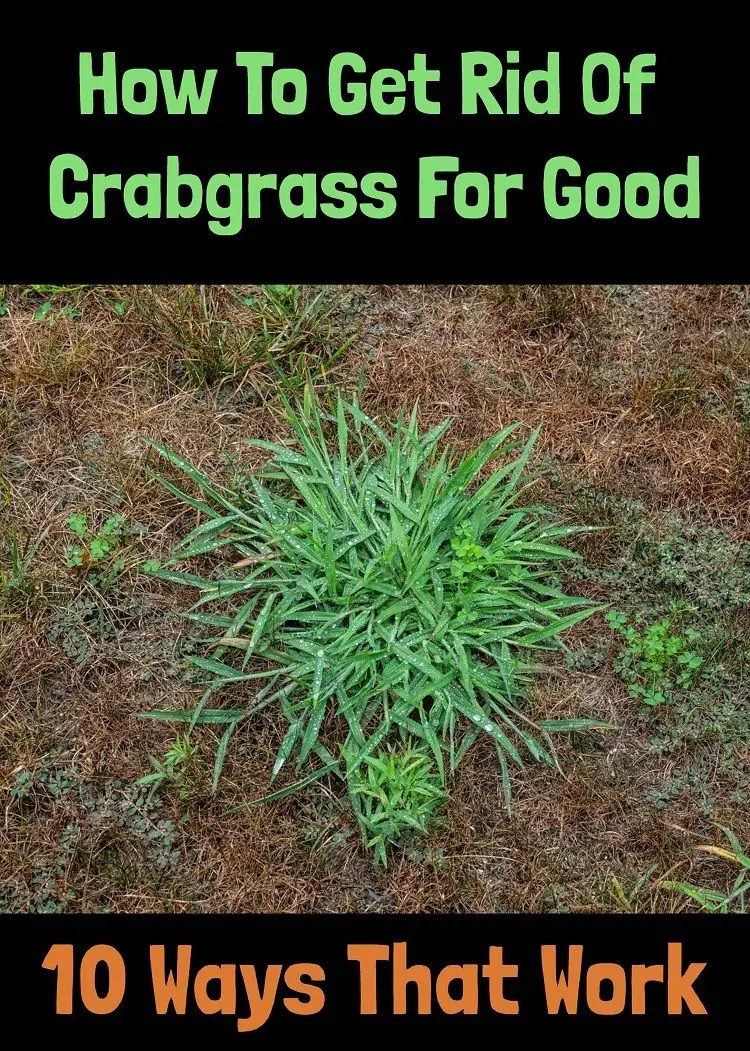What Type Of Fertilizer Is Best For My Lawn
Potassium fertilizer Potassium helps to strengthen the roots and weak leaves of the grass. If your lawn has thin blades of grass that can be easily killed or removed, use a fertilizer with a high potassium content. This type of fertilizer will also help your lawn withstand drought, disease, and cold, and make it tougher overall.
A Closer Look At Violets In The Lawn
These low-growing broadleaf weeds are highly shade-tolerant but will also grow in sunny areas. The flowers on violet can be white, blue, purple, or yellow. They may look small and delicate, but wild violet is quite aggressive and can produce thick mats of leaves that end up depriving the rest of your lawn of nutrients. Unfortunately, violets are difficult to control because of their extensive root systems, their waxy leaf covering, and their fast-growing tendencies.
How Do You Get Rid Of Purple Grass
For the most effective results, use a broadleaf killer. A broadleaf killer will eliminate these invasive plants without doing damage to your lawn. For instance, you can use Dicamba or a killer that contains 2,4-D to kill the the flowers selectively without resulting in any damage to the surrounding turf itself.
You May Like: The Smallest Riding Lawn Mower
Purple Weeds In Grass And Lawn
Are you seeing a purple flower plant in your lawn, which is continuously growing and taking up space from the grass? These plants can be weeds, which are plants growing in the wrong place.
Purple weeds are planted which have flowers blooming with purple color. These weeds often like to grow in lawns with nice sunlight and can become invasive and destroy the whole lawn. Some of the most common purple weeds are Purple Deadnettle and Henbit weed.
Now you know about purple weeds and which are the most common ones but lets talk about these weeds in detail and how you can get rid of them.
The four purple weeds that we are going to talk about are:
- Purple Deadnettle
Lets talk about them in detail.
How To Get Rid Of Purple Clover In My Yard

by Paul Ramone / in Home
Clover weed is an annual and common weed distinguished by its low, broad leaves and purple flower. These weeds are certainly a nuisance to those looking to keep their lawns free of the small purple flowers. While removing the weeds by hand is possible and effective, it is also tedious. With a selective herbicide, however, removing the purple clover weeds is a relatively simple task.
Rinse the garden sprayer if it has been filled with anything other than herbicide.
Fill the sprayer with the selective herbicide that contains the phenoxy-type herbicide, 2,4-D, MCPP and dicamba salt . A selective herbicide will eradicate common weeds, but not harm grass. Make sure that the herbicide is qualified for “postemergent” instances.
- Clover weed is an annual and common weed distinguished by its low, broad leaves and purple flower.
- A selective herbicide will eradicate common weeds, but not harm grass.
Hold the sprayer 4 to 5 inches away from the clover weeds and generously spray the herbicide directly onto the leaves.
Watch the progress of the removal over a week. If clovers remain, reapply the herbicide and continue monitoring the progress. Re-seed the empty patches to reduce the chances of return.
Related
Read Also: Best Lawn Chairs Ever
How Do I Get Rid Of Purple Flowers In My Lawn
The best way to kill purple weeds
How To Get Rid Of Creeping Woodsorrel
What it looks like: Also known as Oxalis, this weed has a purple hue and has sets of three heart-shaped leaves. The stems are hairy and they have bright yellow flowers that emerge in the spring.
Where it typically grows: Creeping woodsorrel prefers growing in shade instead of full sun.
How it spreads: The Oxalis plant spreads through its creeping stems and extensive root systems. Its flowers also release seeds that sprout new plants.
Best ways to get rid of it: A weed killer that targets broadleaf weeds like Ortho Weed B Gon Weed Killer works well to get rid of this plant.
You May Like: Rent To Own Zero Turn Mowers
Also Check: Home Depot Coupons Riding Lawn Mower
Common Types Of Weeds
Lawns can be a perfect breeding place for different kinds of aggressors, such as fungi, insects and most especially weeds. Weeds can sometimes be mistaken as grass. They seem harmless, but they are actually capable of destroying your lawn and killing the grass.
So, how do you spot weeds? To help you identify the weeds growing in your yard, let me help you picture how they actually look.
Should I Get Rid Of Clover In My Lawn
There are several reasons you may want to keep clover in your lawn. Due to its symbiotic relationship with bacteria, clover acts as a natural fertilizer. Clover gets its nitrogen from the air and releases it into the soil. Another benefit? Clover outcompetes other weeds. So instead of something unwanted and unsightly, you could have clover.
Read Also: How Much Does A Typical Lawn Service Cost
What Are Perennial Weeds
Examples of perennial weeds include bindweed, burdock, dandelion, meadow ivy, ground ivy, horsetail, Japanese knotweed, sea buckthorn, poison ivy, mercury, thistle and ivy, and the cross. 2 The Spruce uses only high-quality sources, including peer-reviewed research, to back up the facts in its articles.
What Are Lawn Weeds
Lawn weeds are invasive broadleaf plants or grassy plants that grow in lawns. The weedy plants spoil the appearance of a lush lawn and affect grass growth. Some plants like dandelions are perennial weeds that come back year after year. Annual weeds like crabgrass die off each season and regrow from seed.
You May Like: Lawn Lines
How Do I Get Rid Of Small Purple Flowers In My Lawn
The Best Way to Kill Purple Weeds
. Also, what are the tiny purple flowers in my lawn?
One of the most difficult weeds to control in the lawn is wild violet. This native plant may look cute and dainty, especially in the spring when it produces pretty purple flowers. But in reality it is an aggressive weed with an unusual flowering quirk that results in thick mats of leaves that can choke out your lawn.
Additionally, how do you kill violets naturally? Creating a homemade weed killer to control wild violets requires mixing horticulture vinegar with water. You can use a ratio of 80 percent water and 20 percent vinegar. This homemade wild violet weed herbicide has an 80-percent control rate over most broadleaf weeds when sprayed on the offending plants foliage.
In this regard, will vinegar kill wild violets?
Getting Rid of Wild Violets. Use vinegar on them. It will kill them in a day or two. Put pure vinegar in a bottle that you can control the spray and spray only the violets.
How do I clear my yard full of weeds?
How to Get Rid of a Lawn Full of Weeds
How To Get Rid Of Wild Violets In Your Lawn

- Pin
- Working Time: 1 – 2 hrs
- Total Time: 2 – 3 wks
- Skill Level: Intermediate
- Estimated Cost: $20
Wild violets are a close relative of violas, pansies, and other garden flowers. While some people view this plant as a fine wildflower, others regard it as a stubborn perennial lawn weed. Wild violets can be removed by hand, especially if you regularly inspect your lawn to control the plant before it spreads. But sometimes this weed calls for the use of chemical herbicides for complete eradication.
Don’t Miss: How Much Does It Cost For Lawn Mowing
What Are All These Purple Weeds Growing In Your Lawn
What are all these purple weeds growing in your lawn! Have you noticed the abundance of a small purple flower all around Shreveport and in everyones lawn this year? Some have small patches while other yards have been overrun with the pesky weed, so what is it. Well it is a combination of 2 plants henbit, and purple dead nettle.
How Do I Know If I Have Hemlock
Poison-hemlock stems have reddish or purple spots and streaks, are not hairy, and are hollow. Leaves are bright green, fern-like, finely divided, toothed on edges and have a strong musty odor when crushed. Flowers are tiny, white and arranged in small, umbrella-shaped clusters on ends of branched stems.
Recommended Reading: How To Price Lawn Mowing Jobs
What Are Weeds With Purple Flowers Called
Some lawn weeds with purple flowers are creeping Charlie, purple speedwell, doves-foot cranesbill, henbit, wild violet, red clover, and purple deadnettle. Purple-flowering lawn weeds can be annuals or perennials.
Plants with purple flowers have their place in the gardenbut not growing in the middle of your well-kept lawn.
What Are The Most Common Lawn Weeds
Lawn weeds are common throughout the world. There are over 30 types of lawn weeds, and they grow in USDA zones 2 through 12. So, if you care for a lawn in your front or backyard, the chances are that you must deal with types of weeds sooner or later.
Here are some of the most common weeds you are likely to see growing in your lawn:
- Creeping CharlieThis irritating lawn weed is an invasive creeping plant with scalloped leaves and clusters of purple flowers blooming in spring.
- DandelionsA common yellow-flowering weed with narrow, lance-shaped irregularly lobed leaves.
- CrabgrassA pesky annual weed that looks like clumps of grass and can make lawns look unkempt and bumpy.
- OxalisThis broadleaf perennial weed often grows in lawns where you dont want it. The weedy plant has clover-like leaves and yellow buttercup flowers.
- QuackgrassA persistent noxious weed with fast-growing, creeping growth that can quickly destroy your lawns appearance.
Read Also: How Much Fertilizer Per Acre Of Grass
Off With Their Heads With A Scuffle Hoe
The scuffle hoe gets its names from the double-edged hinged blade that rocks back and forth with a push-pull motion. As it rocks, it slices weeds off at the crown. Repeated beheading depletes the weed roots of stored food and the plant dies. Shallow cultivation also avoids bringing more weed seeds to the surface where they can sprout.
How Do I Get Rid Of Purple Weeds In My Lawn
Fall is the ideal time to control wild violets as they will more readily move herbicides into the root system as they prepare for winter. Due to their fleshy, energy storing roots, any non-selective herbicide you use must be systemic. Glyphosate will work but may take 2-3 applications a few weeks apart.
You May Like: When To Dethatch In Minnesota
How Do I Get Rid Of Purple Flowers In My Yard
4.8/5Learning to fully remove these weeds will ensure the health and beauty of your green lawn.
One of the most difficult weeds to control in the lawn is wild violet. This native plant may look cute and dainty, especially in the spring when it produces pretty purple flowers. But in reality it is an aggressive weed with an unusual flowering quirk that results in thick mats of leaves that can choke out your lawn.
Secondly, how do you get rid of purple clover? Choose a selective postemergence broadleaf herbicide you can apply to kill the clover without harming the surrounding grass glyphosate herbicides applied when the clover is still small are often effective at controlling clover growth.
In this manner, will vinegar kill wild violets?
Getting Rid of Wild Violets. Use vinegar on them. It will kill them in a day or two. Put pure vinegar in a bottle that you can control the spray and spray only the violets.
How do you get rid of wild violets in a flower bed?
Use a selective broadleaf killer.For best results, select an herbicide containing either 2,4-D or Dicamba. One containing Quinclorac may also work well against wild violets. These herbicides are formulated to kill broadleaf plants, like wild violets, while leaving most grasses unharmed.
Prevention Provides The Best Defense

Not everyone agrees on what a weed is. One person may welcome sunny yellow dandelions, while others pounce to eradicate them before one of the plant kingdoms most cleverly engineered seed machines do their thing.
We can all agree, though, that certain unwelcome invaders pop up among vegetables, creep into the lawn, wedge their way into driveway and sidewalk crevices, or launch a full-on invasion.
The best defense is preventing weeds from taking root in the first place. Keep your lawn lush and eliminate thin, vulnerable spots. Mulch around garden plants and landscaping to stop seeds from reaching the soil. The Weed Science Society of America recommends making sure backyard compost reaches a high enough temperature to decompose any weed seeds mixed in with grass clippings or leaves.
If weeds do take root, decide whether youre willing to eradicate weeds by hand and hoe, experiment with homemade or organic weed killers or go for a commercial herbicide.
Heres a look at some of the most common weeds and how to keep them from taking over.
Don’t Miss: Murray Mower Replacement Parts
How To Prevent Lawn Weeds
The best way to prevent lawn weed issues is to practice excellent lawn care methods. This means mowing high, fertilizing lawns regularly, removing thatch, aerating lawns, and overseeding them. Healthy turfgrass with a robust root system prevents weeds from taking root. Additionally, keeping grass longer prevents sunlight from allowing weed seeds to germinate and sprout.
Related articles:
How To Get Rid Of Purple Deadnettle
Purple deadnettle is an annual plant, which grows in winter. So if you want to stop this weed to grow in your lawn, the best way is to stop the germination of the seeds in the spring. This will make your work much easier.
The best way to stop germination of the seeds is to apply a pre-emergent herbicide to your lawn in early spring before the weeds start to grow.
If you already have purple deadnettle on your lawn then you can do two things, the first is to pull it out by hand. This can be an effective way if you have a small amount of weed on your lawn.
The other method is to apply post-emergent herbicide directly to the weeds in your lawn. The herbicide will kill all the weeds in 2 to 3 days and then you can take it out with the help of a rake.
Recommended Reading: Does Lowes Service Lawn Mowers
What Are Those Purple Weeds Called
The purple weeds found in the lawn are called purple deadnettle or Henbit . Both of these weeds are very common in lawns and comes from the same mint family and often get confused because of their similar appearance. They both have square stems and grows high on the lawn. Both of the weeds have purplish leaves and grows purple flowers in the middle of them.
Help I Have Violets And Ground Ivy In My Lawn Info & Tips For Killing Tough Weeds
Ground ivy and violets in the lawn can be the cause of a major headache. It might seem as though every year you have more and more of these persistent weeds and no matter what you try, you cant seem to get rid of them.
Youre not just imagining it. The truth is, the aggressive nature of both ground ivy and violets makes these weeds two of the toughest to get rid of. Your fight against them can almost feel futile as they seem to fight back harder. When it comes to getting rid of ground ivy and violets, youll want to take the mentality of losing the battle but winning the war to heart. Its going to be a long road, but the right treatment approach by a professional can get you there.
Read Also: How Much To Charge For Aeration
When Purple Flowers Arent Pretty
Looking out over your yard or garden, you want to be sure the pretty purple flowers you see are intentional, and growing where you want them.
When purple flowering weeds become a problem, there are solutions to eradicate them and prevent them from returning.
Whether its Creeping Charlie, one of its friends from the mint family, or wild violet, there is hope for eliminating that undesirable purple hue from your yard.
Identifying the weed youve got is the first step toward a weed-free lawn or garden.
Choosing A Lawn Care Company To Win The War On Tough Weeds
While it may feel like the battles against these weeds are never-ending, when you choose to work with a lawn care company that employs a long-term strategy against tough-to-control weeds like violets and ground ivy, then youll finally start to see some light at the end of the tunnel.
With the right approach, youll see these weeds lessening each year as your thick and healthy lawn fills in. Of course, when it comes to combating aggressive weeds, you absolutely must keep up with a proactive annual program. Even taking just one year off could land you right back in a mess. But with the right care, performed regularly, you can stop feeling like progress is hopeless and start seeing the results you desire.
Are you ready to have a thicker lawn and get rid of violets and ground ivy at your Allentown, Bethlehem, or Easton, PA home? Get in touch with us to get some free expert advice and learn more about our lawn care programs which include three lawn care pricing options.
You May Like: Revive Lawn Spray Reviews
